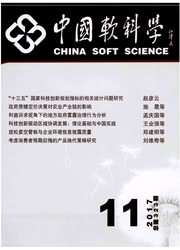

 中文摘要:
中文摘要:
本文采用2004年经济普查数据考察北京制造业地理集聚及其形成机制。北京市制造业中传统产业比较集聚,高新技术产业和“现代制造业”相对分散,制造业呈一定郊区化趋势。实证分析表明,产业劳动力结构和空间结构显著影响北京市产业集聚水平。由于北京市具有一体化的高素质劳动力市场,高教育水平、高技能、高职称以及研发型劳动力显著促进产业集聚,低素质劳动力市场由于地域分割严重,不利于产业集聚。制造业向心分布提升产业集聚水平,但郊区化则推动产业分散布局。内部规模经济是产业集聚的推动力,地方产业政策与引资政策则导致产业离散分布。
 英文摘要:
英文摘要:
This paper examines the micro -foundations of industrial agglomeration of manufacturing industries in Beijing using data from the first economic census conducted in 2004. The traditional resource based industries are highly ag- glomerated while both labor and capital - technology intensive could be fairly dispersed. There is also a trend of subur- banization of manufacturing industries in Beijing. Statistical analysis highlights the significant role of labor composition and urban structure in industrial agglomeration. Due to the integrated labor market, high quality labor has indeed driven the industrial agglomeration of industries while industrial suburbanization has encouraged the dispersion of industries in Beijing. Scale economies lead to more agglomeration while local industrial and investment policies may result in less agglomeration.
 同期刊论文项目
同期刊论文项目
 同项目期刊论文
同项目期刊论文
 Geographical concentration of manufacturing industries in China: The importance of spatial and indus
Geographical concentration of manufacturing industries in China: The importance of spatial and indus Globalization, institutional change, and industrial location: Economic transition and industrial con
Globalization, institutional change, and industrial location: Economic transition and industrial con 期刊信息
期刊信息
